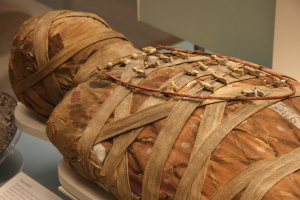A Day At The Museum

What helps children learn from their visit to the museum?
Quick note: you may have noticed the theme changed. I’m trying a new look. It’s a work in progress. Do let me know if you like it!
Last week, an opportunity arose when my daughter commissioned her daddy to take her to a friend’s birthday party (“but no drop-off, daddy! You have to stay the WHOLE time.”). So, my son and I went to the British Museum. For a geeky 6-year-old and his nerdy mama, the British Museum is anthropological heaven. We saw all kinds of things: mummies, the Rosetta Stone, 6000 years old flint knives, and things that were buried in a ship 1300 years ago.
This got me thinking about museums and how children learn. Naturally, I consulted Google Scholars and found a study done in Chicago about how talking to your kids help them learn. As we are a family who talks a lot (I’m the least chatty person in our family, if you can imagine), I was very happy to find this paper.
What They Did
The researchers wanted to look at the effects of having conversation cards (with open-ended questions on them), as well as having a physical object (a hands-on experience). So they randomly assigned families into one of 4 groups: families who received no activity, families who received only conversation cards, families who received only physical objects, and families who received both (this is a very neat 2x2 design).
They then took the families to an exhibit that contained the target objects (the cards were about the same objects), and then to another exhibit that was linked, but did not contain the exact same objects. I thought the second exhibit was a nice addition because they could look at transfer—whether the families talked about what they saw in the first exhibit when they were going through the second exhibit.
What They Found
Parents who received the cards used more elaborative talk while going through the exhibit. Parents use elaborative talk when they ask the child open-ended questions (“What do you think this was used for?”) and when they make explicit connections with prior knowledge (“This is very different from your bed”). Elaborative talk is important because it helps children engage with what they are seeing, and anchors the things they see in their own daily experiences, which are very concrete.
The parents who received the cards (regardless of whether or not the families received the physical objects) also made more connections between the second and the first exhibit, supporting children’s transfer of knowledge. This means that the child is more likely to be able to transfer this knowledge to new settings, such as the classroom.
They also found that children whose families received the cards made more spontaneous comments while going through the exhibition, and they also made more associations between the second and the first exhibits.
What It Means
The British Museum has “family trails”—basically booklets that take you to certain items along the galleries and explain about them. They have some activities on them (such as, “talk about what you would bring to your after-life”. I’m not kidding.), but from this research it would appear that sitting down before going into the exhibit and talking about what we are going to see might have helped my son to get more out of the experience. Personally, I was a bit disappointed when all my son could remember the next day was that he has the best eye-sight in the family because he spotted all the items we were supposed to find on our “trail”. Not exactly what I was hoping for in terms of learning.
So, if you are taking your kids to a museum, ask them lots of open-ended questions and connect what you see to their lives (try not to invoke discussions about death if your kid is young unless you really want to). If you have a few extra minutes at home before you head out, take a peek at the museum’s website and find something you want them to see. Show it to them, and talk about it on the way: talk about why you want to see it, what you think the museum people wrote on the sign beside it, what would you use if for if you had one at home, and so on. It might be a fun talk 😀
